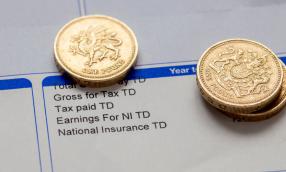Value-based pricing means setting a price customers are willing to pay based on the perceived value to them of your product or service - not on the cost of providing it. Pricing strategist Mark Stiving of Pragmatic Pricing explains
Value-based pricing (or value pricing) is the most highly recommended pricing technique by consultants and academics. The basic idea is to set a price that's based on what your customers are willing to pay.
Before I explain value-based pricing, though, let's look at how your customers make decisions about which product to buy.
How do customers determine value?
Imagine you're at the supermarket and you want to buy a can of green beans. Two cans catch your eye - the store's own-label can and a branded product. The first costs £1.49 and the second costs £1.69. How do you choose? You ask yourself, is the brand name can worth 20p more?
To answer this, you think of everything that is different between the two cans. You may have had better experiences with one variety. One may have less salt. One may be cut differently. One may have a prettier label. It's completely up to you as to what you think is important.
After you've determined the important differences, you place a value on them and then decide if the branded can of beans is worth 20 pence more than the own-label can.
Of course you don't actually overtly make these calculations. But that is how your mind makes the decision.
Working out what price to charge
Notice that there is no right or wrong answer. People are different and value things differently.
For your business, the important thing is to ask your customers what they would have bought, if not your product or service. Their answers tell you who your toughest competitors are.
Now, choose one of these competitors and do the value-based buying maths for yourself. How much is your product or service? How much is your competitor's? What are all of the differences? (Don't be biased. Be sure to list the areas where your competitor is better.)
How would you value these differences? How do you think your customers value these differences?
How to set value-based prices
Value-based pricing is about setting a price that represents the value the customer receives from your product or service - not the cost of providing it.
Here are the steps:
- Identify your customer's 'second-best option'. If your customer can't buy your product or service, then what would he or she choose?
- Find out the price of the second-best option.
- List all of the ways that your offering is better. Estimate how much you think these differences are worth to your customers.
- List all the ways that the second-best offering is better. Be very honest here. How much do you think these are worth to your customers?
- To calculate the best price:
- take the price of the second-best option;
- add the value of your advantages;
- subtract the value of the second-best option's advantages.
Value-based pricing and customer segmentation
All customers are different, so which ones do you think about when doing this analysis?
First off, choose a customer that purchased from you and do the analysis. Then, choose a customer who didn't buy from you (harder to find) and do it again. Customers who buy from you and those who don't value your offering differently.
As a marketer, your target market should be the customers who value your advantages. You should price for those customers. If you are trying to reach a broader market, you may want to lower the price. However, a better strategy may be price segmentation.
Real world pricing
This process does not give you the 'right' answer, but it gets you close. It lets you see how your customers are making decisions, and calculates a possible price so you can see if it makes sense. Eventually, you may have to tweak this price up or down based on your judgment and experience.
Don't skip through the process. Even if it gives you the same price range you are currently using, it forces you to think about your customers' decision processes. This is valuable to you.













